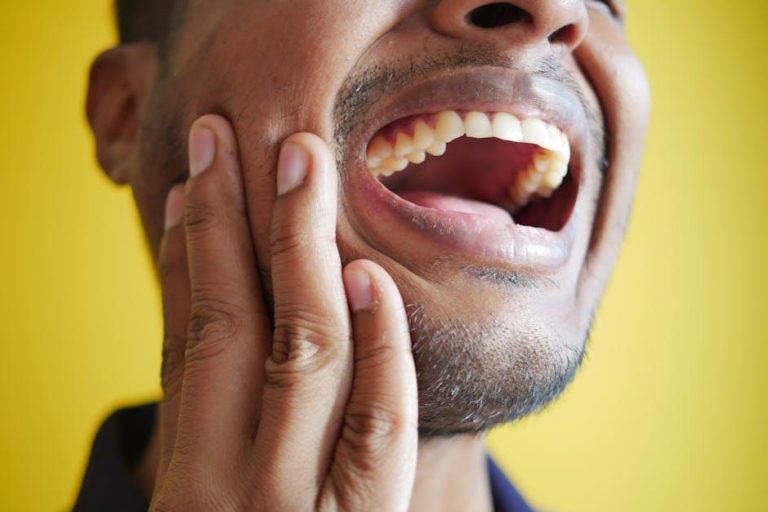
What Qualifies As A Dental Emergency? – Texas A&M
Dental emergencies can be scary and painful — but knowing when you need urgent dental care can make all the difference in protecting your oral health. If you’re a Texas A&M student, faculty, or resident in the surrounding area, understanding what qualifies as a dental emergency will help you act promptly and wisely should unexpected dental issues arise.
What Is a Dental Emergency?
A dental emergency refers to any oral health problem that requires immediate attention to alleviate severe pain, stop bleeding, or prevent permanent damage to the teeth, gums, or other oral structures. Not all toothaches or dental problems require emergency care; some can wait for a regular dental appointment.
Common symptoms that might indicate a dental emergency include intense pain, uncontrolled bleeding, or trauma that threatens the integrity of your teeth or oral tissues.
Common Types of Dental Emergencies
Here’s a look at some typical dental emergencies experienced by individuals in the Texas A&M community and beyond:
- Severe Toothache: Sharp, persistent pain signaling possible infection or dental abscess.
- Knocked-Out Tooth: When a tooth is completely dislodged due to trauma.
- Broken or Chipped Tooth: Significant fractures exposing the inner pulp or causing pain.
- Lost Filling or Crown: When dental restorations fall out causing sensitivity and discomfort.
- Abscess or Infection: Swelling, pus, and intense pain indicating bacterial infection.
- Soft Tissue Injuries: Cuts or lacerations in the gums, tongue, or cheeks causing bleeding.
- Uncontrollable Bleeding: After dental procedures or injury needing immediate control.
Dental Emergency vs. Urgent Dental Care: What’s the Difference?
Understanding the distinction between a true dental emergency and urgent dental care can help you decide when immediate treatment is necessary or when to schedule a prompt dental visit.
| Condition | Dental Emergency | Urgent Dental Care |
|---|---|---|
| Severe Toothache | Yes, if accompanied by swelling or fever | No, if mild and intermittent |
| Lost Crown | No, unless pain or sensitivity is severe | Yes, needs timely replacement |
| Knocked-Out Tooth | Yes, immediate care within 1 hour | No |
| Broken Tooth | Yes, if pulp exposed or severe pain | Yes, if minor chip only |
| Soft Tissue Cuts | Yes, if bleeding won’t stop or large wound | No, minor cuts |
What To Do In Case Of A Dental Emergency Near Texas A&M
Immediately addressing dental emergencies can prevent complications and save your natural teeth. Here are practical steps to take:
1. Manage Pain and Bleeding
- Rinse your mouth gently with warm salt water.
- Use a cold compress on your cheek to reduce swelling.
- Take over-the-counter pain relief as directed.
- If bleeding, apply gentle pressure with sterile gauze or a clean cloth.
2. Preserve Dislodged Teeth
- If a tooth is knocked out, handle it by the crown (not the root).
- Rinse it gently with water if dirty; do not scrub.
- Try to reinsert it if possible, or keep it moist in milk or saliva.
- Seek emergency dental care immediately — ideally within 60 minutes.
3. Avoid Harmful Actions
- Do not use aspirin directly on the gums or teeth.
- Do not attempt to repair broken teeth yourself.
- Avoid hot or cold foods that worsen pain.
4. Locate Emergency Dental Services
If you are near Texas A&M University, many local clinics and dental practices offer emergency services, including weekend and after-hours care. Contact your regular dentist if available, or use the Texas A&M student health resources for referrals.
Benefits of Knowing Emergency Dental Care Procedures
Recognizing and responding correctly to dental emergencies has numerous benefits, especially for the Texas A&M community:
- Prevent Permanent Damage: Prompt treatment helps save natural teeth and reduces the need for complex procedures.
- Minimize Pain & Discomfort: Early pain management improves comfort and recovery.
- Lower Healthcare Costs: Avoiding complications can reduce the expenses of extensive dental treatments.
- Faster Recovery: Immediate care speeds up healing of soft tissue injuries and infections.
A Real-Life Case Study: Texas A&M Student’s Emergency Experience
“Late one evening, Riley, a Texas A&M student, fractured his front tooth during intramural sports. Knowing it was a dental emergency, he contacted the campus emergency dental hotline. The dentist was able to quickly bond the tooth back, alleviating his pain and preserving the tooth. Riley credits knowing what constitutes an emergency for saving his smile.”
Conclusion
Understanding what qualifies as a dental emergency is essential, particularly in the Texas A&M community where busy schedules can make managing health difficult. Whether it’s a sudden toothache, a knocked-out tooth, or severe oral trauma, recognizing urgent symptoms and responding immediately can significantly impact your oral health outcomes. Always seek prompt professional attention and don’t hesitate to use local emergency dental services in the Texas A&M area when needed.
For more information, resources, and emergency dental contacts near Texas A&M, visit your campus health center or trusted local dental providers. Your smile deserves timely, expert care!


